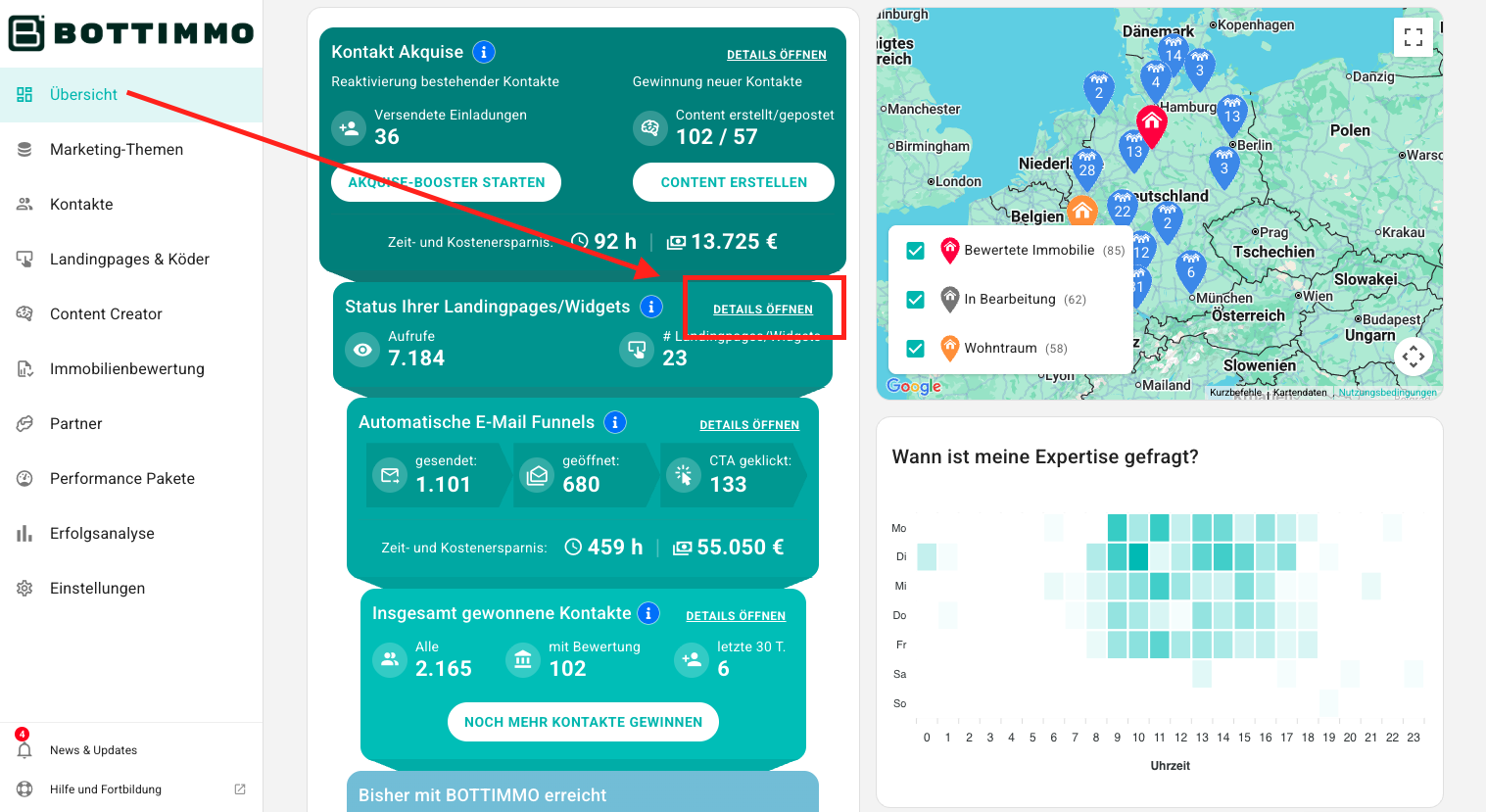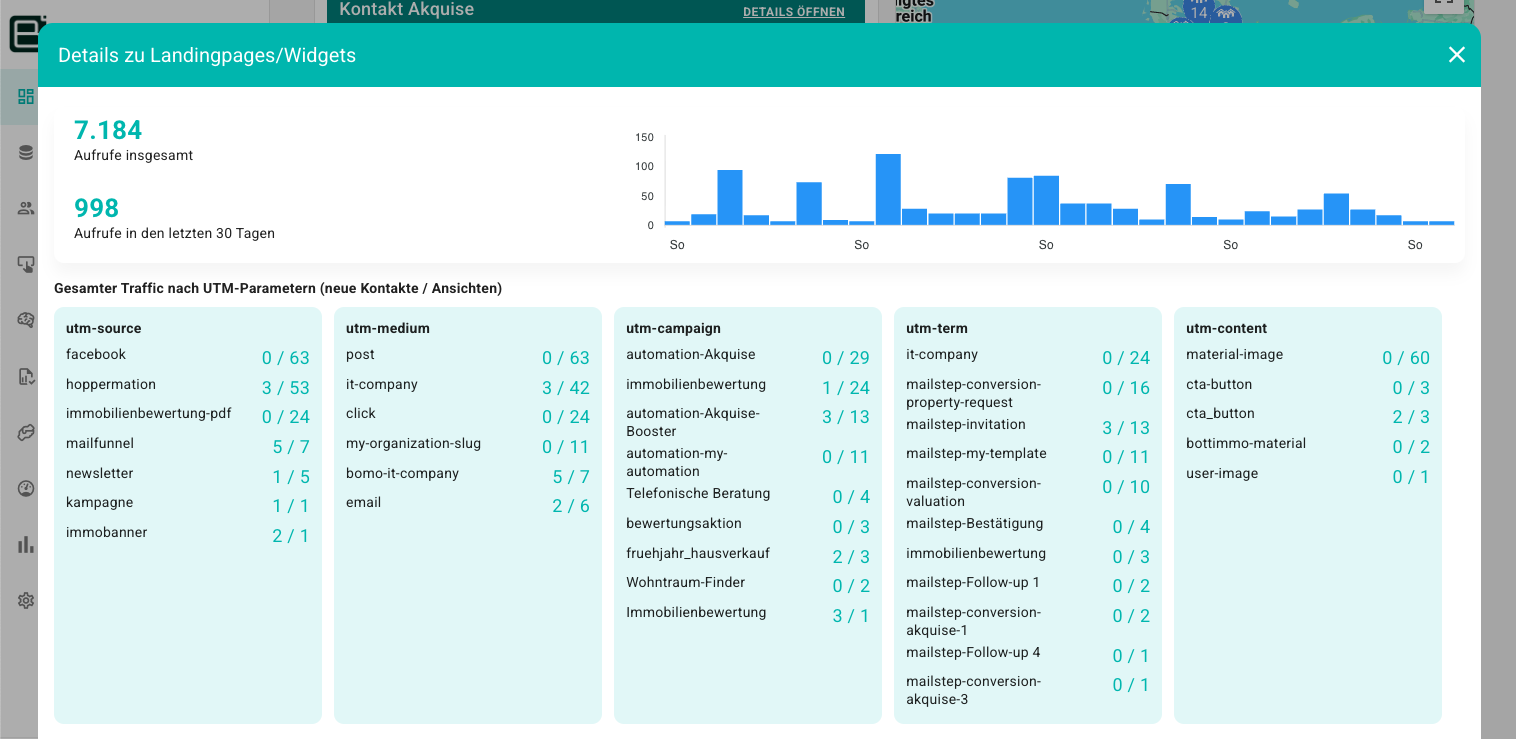Tracking with UTM parameters
To identify the source of a lead, you can use UTM parameters. These are small add-ons to your links that help track whether a lead came from your website, an ad banner or a flyer. In this guide, you’ll learn step by step how to use this feature to determine the origin of your leads.
What exactly are UTM parameters?
UTM parameters are small tags added to links to track the source of a visitor or action (e.g. a download). They help you see exactly where a visit or interaction came from – for example, from a specific web page, a banner or a QR code.
A UTM parameter looks like this:
https://www.my-website.com/guide?utm_source=flyer&utm_medium=qr-code
In this example:
- utm_source=flyer shows that the visit came via a flyer.
- utm_medium=qr-code indicates that the link came via a QR code on the flyer.
These parameters make it easy to see which sources and marketing efforts are most effective.
Example uses
Lead source: Your own “Guide overview page”
You have a page on your website listing all guides and checklists. If you want to know how many downloads came from this page, you can track it with a UTM parameter in the link. For example, you might call the parameter “my-website” to track the exact source.
Lead source: Banner
Suppose you placed a banner on ImmoScout linking to the guide “Private Property Sale”. If you want to know how many downloads came from this banner, simply add a UTM parameter to the banner link, like “immoscout-banner”. This allows clear attribution of downloads to the banner.
Lead source: QR code
Let’s say you promote a guide on a flyer and include a QR code linking to the guide. If you add a UTM parameter to the QR code link, you can clearly see how many downloads happened through the flyer.
Detailed documentation
1. Add UTM parameters to your link
Let’s walk through an example step by step:
Example: You want to track how many downloads of the guide “Private Property Sale” came from your own guide overview page. You implement a tracking parameter (UTM parameter) called “my-website” into the link on the overview page that forwards to the specific guide page.
(This also works for ImmoScout banners, QR codes or other links to landing pages.)
💡 Important: the UTM parameter must be included in the link that leads to the page where the download happens.
How does it work?
- Go to the existing link on your website that leads to the guide page “Private Property Sale”.
The link will look like this:
<a href="https://www.immowissen.org/private-property-sale">To the guide</a>
- Adjust the link like this:
<a href="https://www.immowissen.org/private-property-sale?utm_source=my-website">To the guide</a>
The original link is now extended by a unique parameter “my-website”. Specifically, you add ?utm_source=my-website to the link. If a visitor opens the landing page via this link and downloads the guide, the lead source “my-website” will be shown in the BOTTIMMO app. This way, you can see where each lead came from.
2. View lead source in the BOTTIMMO app
To check how successful each source is, log in to the BOTTIMMO app.
- Go to the “Overview” tab.
- In the “Landingpages/Widgets Status” section, click on "Show details".
- A view with all UTM parameters will open.

This view shows all collected UTM parameters and how many contacts were generated through each:

Ways to use UTM parameters
Here are some examples of how you can use your own UTM parameters. These are just ideas and not a complete list. They should give you inspiration for your own use cases.
Your own ads (A/B testing):
UTM parameters help test the performance of different ads.
For example, compare a blog post and a forum post that both link to the “Private Property Sale” guide.
The blog post link could be:
https://immspired.immowissen.dev/private-property-sale?utm_source=blogpost
→ The original link is extended with ?utm_source=blogpost.
The forum post link could be:
https://immspired.immowissen.dev/private-property-sale?utm_source=forumpost
→ The original link is extended with ?utm_source=forumpost.
You can now see in the BOTTIMMO app which link generated more downloads.
ImmoScout banner:
To test how well a banner on ImmoScout works, adjust the link to the “Private Property Sale” download page as follows:
https://immspired.immowissen.dev/private-property-sale?utm_source=immoscout_banner
→ The banner link is extended with ?utm_source=immoscout_banner.
You can then see in the app how many downloads were generated by the ImmoScout banner.
Summary
To measure the success of a marketing campaign, simply add a UTM parameter to the link that leads to the download page.
